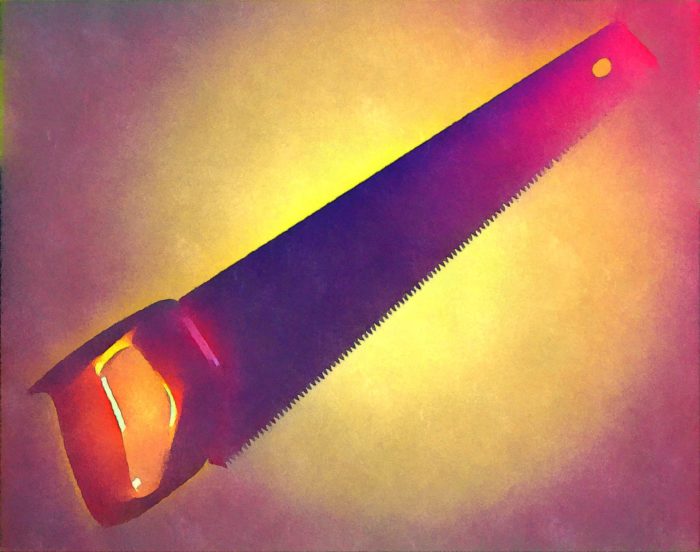Contact transducers are really nifty, but take some doing to use.
Please Remember:
The opinions expressed are mine only. These opinions do not necessarily reflect anybody else’s opinions. I do not own, operate, manage, or represent any band, venue, or company that I talk about, unless explicitly noted.

 Want to use this image for something else? Great! Click it for the link to a high-res or resolution-independent version.
Want to use this image for something else? Great! Click it for the link to a high-res or resolution-independent version.You may eventually be asked to transduce the noises produced by a saw. I’m not talking about sound effects for film, here. I’m talking about music. A handsaw with a sufficiently manipulable blade can be played very effectively with a violin bow. The resulting emanations are what I would call “a wood-shop Theremin.”
I have effectively captured these sonic events with regular microphones. As with anything else, a unit that basically sounds like the thing it’s pointed at will generally be fine. The troublesome element really is that saws don’t have the kind of body that creates a lot of output. Their resulting lack of SPL can pose a challenge when they’re put into an ensemble, because almost anything else is going to be much, much louder.
As a result of the above, I have, (for years) wanted to try using a contact transducer on a musical saw. I finally got my chance a couple of weeks ago. I was very pleased with the outcome, because I could actually hear some of what the saw was doing in the context of a very busy band.
The key to the whole thing was a Dean Markley Artist Transducer. It’s essentially a gussied-up piezo, with the element potted in some kind of polymer that sits in a wooden surround. The bottom of the pickup has that poster-tack Silly Putty applied, so you can temporarily stick the thing to a surface. As with any piezo-based transducer, you’ll want to connect it through an active DI box; The ultra-high impedance of the op-amp will stop you from loading down the pickup.
Contact micing lives and dies on placement, even more so than regular microphones. Parking the transducer in a bad spot can get you very strange results, but there’s more to the story: The pickup’s physical contact changes the vibrational behavior of the surface that it’s connected to. As such, you want to find a spot where you’ll get good transfer of the instrument’s movement, while avoiding a placement that dampens that same vibration. With a saw, that means that you’ll probably want to search for a place that’s as close to the handle as possible. This serves the dual purpose of keeping the transducer and cable out of the way, while also allowing the blade to move freely.
You will also want to make sure that you have the ability to DRASTICALLY reduce the high-frequency output of the saw channel. (A freely sweepable low-pass filter is the best case.) I’m starting to form a theory that vibrating surfaces and air create a sort of acoustical inductor – a device that impedes high-frequency output. Take away the transition to air-carried waves, and a lot of information that you’re not used to hearing comes into play. The bow scraping against the blade is hard to hear with traditional micing, but a contact mic really brings that sound through. We ended up rolling the filter down rather far…like, 1 kHz far, before a result was created that wasn’t too jarring.
All of this takes some work and planning, certainly, but the end result of much, much, MUCH improved gain-before-feedback can be tremendously helpful. Consider getting a contact transducer for your box-of-goodies. It might prove to be a highly handy tool one day.